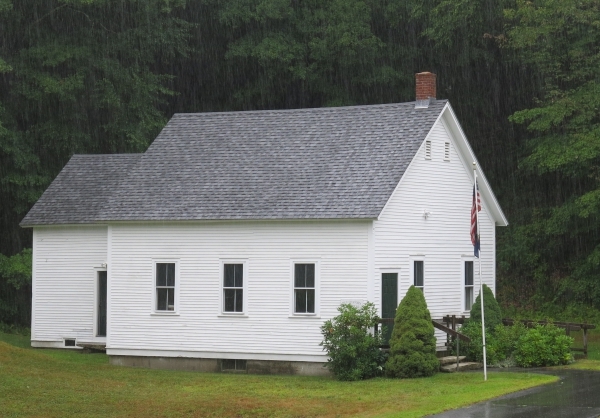DUMMERSTON — In May 2012, Dummerston resident and society member Sam Bunker, son of Ambassador Ellsworth Bunker, gave the Dummerston Historical Society a big collection of his father's memorabilia: photos, awards and medals, correspondence, manuscripts, art work, news clippings, scrapbooks.
Ambassador Bunker, who died in Dummerston in 1984 at the age of 90, was one of the country's most distinguished and influential diplomats, serving in Argentina, Italy, India, Vietnam, Panama, and the Dominican Republic. But much of his collection was of only tangential interest to the historical society.
The society selected items of local interest for its archive. Society director Jonathan Flaccus organized the rest and sent it to auction, where it sold for nearly $87,000 in March 2013.
After the auction house took its commission, the historical society found itself with a sizable sum of money. It didn't take long to figure out what to do with it.
On a rainy Tuesday, the historical society broke ground on an addition to the old one-room schoolhouse in Dummerston Center that has been its home since the mid-1970s.
The building, which is next to the town office, serves as an office, archive, museum, and gallery for the society. It has accumulated many artifacts of local interest and an extensive collection of old and current photographs, and has presented many programs and exhibits on local and regional topics.
However, as the society's collections and activities expanded, space became increasingly tight.
The society's budget was equally tight. It had long wanted to build an addition, but it was not until the windfall from the sale of the Bunker memorabilia that planning began in earnest.
After two years of planning work from a building committee consisting of society members and representatives of the town, a contract has been signed with Brunelle & Son Construction.
Work is scheduled to begin Aug. 17 and should be completed in early October.
The addition is designed to harmonize architecturally with the existing building. It will consist of a 16-foot by 16-foot room with an 8-foot by 24-foot shed extension to be used mainly for storage, office work, and exhibit preparation.
There were some bureaucratic hurdles for the project to clear. The society needed a conditional use permit from the town, a public safety permit from the state, and an Act 250 permit, which in turn needed an Agency of Natural Resources riparian buffer plan to protect the small stream on the property.
While town money is not being used for the project, the project is a cooperative venture with the town. The schoolhouse has no plumbing, but has a larger meeting space than the town offices. Visitors to the schoolhouse will have access to the town office restroom, and town boards and committees will be able to meet as needed at the schoolhouse.
This project has required the cooperation of many people. Historical Society member Charles Fish said that, in addition to the building committee, Alan McBean determined that the town's septic system could handle both town and schoolhouse use, and David Ryan drew the architectural plans and has consulted at every step of the way. Both donated their services to the project.
Fish said Town Clerk Pam McFadden, Treasurer Laurie Frechette, Zoning Administrator Charlotte Annis, and members of the Selectboard and the Development Review Board all cooperated both personally and in their official capacities.
Jim Hadden of Brunelle Construction worked out many of the project details, Fish said, and John Brunelle acted not only as builder, but as a donor to the project as well.
There is more work to do, Fish said. To save money, the society will take on the painting of the addition. Volunteers are welcome.
He also said that grants have been received from the Crosby-Gannett ($1,000) and Dunham-Mason ($300) funds through the Vermont Community Foundation, but more money must be raised for heating, furnishings, and equipment.
